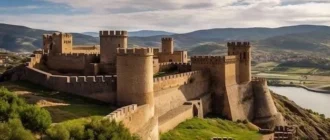Standing sentinel at the southern tip of Worli village, overlooking the expansive Arabian Sea, Worli Fort is a testament to Mumbais layered past. While often misattributed to the Portuguese, this historical edifice was, in fact, a British construction, erected around 1675. Though smaller in scale compared to some of Mumbais other fortifications, Worli Fort played a crucial role in the citys maritime defense and offers a glimpse into a bygone era.
A History Shaped by Strategic Importance
The British, recognizing the strategic value of the seven islands that would later become Mumbai, sought to fortify their position. Worli Hill, with its commanding view of Mahim Bay, offered an ideal location for a lookout point. The forts primary function was to monitor maritime traffic, keeping a watchful eye out for potential threats, including enemy ships and pirates.
During its time as an active military outpost, Worli Fort served as a vital link in the chain of fortifications protecting the western coastline. Its strategic placement allowed the British to control the entrance to Mahim Bay, safeguarding the burgeoning trading activities of the East India Company.
Simple Architecture, Significant Purpose
Worli Fort, while not as architecturally elaborate as some of its counterparts, boasts a sturdy and functional design. Constructed using locally sourced basalt rock, a common building material for fortifications in the region, the fort is a testament to practicality over ornamentation.
The forts structure is characterized by high walls, a strategically placed gate, and platforms for cannons, underscoring its military purpose. Within its walls, a well provided access to fresh water, essential for sustaining the garrison stationed there. Today, the fort also houses a small temple, reflecting the evolving cultural landscape of the area.
Worli Fort Today: A Blend of History and Transformation
Over the centuries, Worli Fort has witnessed Mumbais dramatic transformation from a collection of islands into a bustling metropolis. While the fort itself fell into disrepair for a period, recent restoration efforts have breathed new life into this historical gem.
Today, Worli Fort stands as a protected monument, offering visitors a tranquil escape from the citys frenetic pace. The forts strategic location provides breathtaking panoramic views of the Arabian Sea, the Bandra-Worli Sea Link, and the Mumbai skyline.
Experiencing Worli Fort
A visit to Worli Fort is a journey through time, offering a unique perspective on Mumbais rich history. Here are some highlights to enhance your experience:
1. Explore the Forts Structure
- Walk along the forts ramparts, imagining the lives of the soldiers who once patrolled these walls.
- Examine the platforms where cannons once stood guard, a reminder of the forts defensive role.
- Take note of the sturdy basalt construction, typical of forts in the region.
2. Soak in the Views
- Capture stunning photographs of the Bandra-Worli Sea Link, an architectural marvel that complements the forts historical significance.
- Enjoy panoramic views of the Arabian Sea, witnessing the ebb and flow of the tides.
- Observe the contrast between the historic fort and the modern cityscape in the distance.
3. Immerse Yourself in the Surroundings
- Wander through the vibrant Worli Fishing Village, experiencing the daily life of one of Mumbais oldest fishing communities.
- Observe the traditional fishing boats bobbing in the harbor, a testament to the enduring connection between the sea and the city.
- Sample local delicacies at nearby eateries, savoring the flavors of Mumbais coastal cuisine.
Preserving a Legacy
Worli Fort, though often overshadowed by its more prominent counterparts, stands as a symbol of Mumbais resilience and its ability to preserve its historical treasures amidst rapid urbanization. As a protected monument, the fort serves as a reminder of the citys layered past and its journey to becoming the bustling megacity it is today. A visit to Worli Fort is not merely a sightseeing trip; its a step back in time, offering a glimpse into the citys formative years and the strategic importance of its maritime heritage;
Worli Fort: A Deeper Dive into its Significance
Beyond its physical presence, Worli Fort embodies a convergence of historical, social, and architectural narratives that enrich our understanding of Mumbais evolution. Delving deeper into these facets unveils the forts multifaceted significance.
A Microcosm of Colonial Influence
The construction of Worli Fort by the British in the 17th century reflects a pivotal period in Indias history. It serves as a tangible reminder of the expanding influence of the British East India Company and its strategic maneuvers to secure control over key maritime routes. The forts very existence underscores the growing economic and political ambitions of the British in the region٫ ultimately shaping the destiny of Bombay and٫ by extension٫ India.
Architectural Simplicity and Military Function
While lacking the grandeur of some of Mumbais other fortifications, Worli Forts architectural simplicity is, in itself, noteworthy. Its design prioritizes functionality over embellishment, characteristic of military architecture of the period. The use of locally sourced basalt, a readily available material, speaks to a pragmatic approach to construction, maximizing efficiency and resourcefulness. This focus on practicality over aesthetics highlights the forts primary role as a strategic outpost.
A Catalyst for Conservation and Community Engagement
Worli Forts recent restoration, though met with some debate regarding its execution, has brought to the forefront the importance of heritage conservation in a rapidly developing urban landscape. The forts transformation has sparked conversations about balancing preservation with modernization, prompting a reevaluation of the citys relationship with its historical sites. Moreover, the forts presence has fostered a sense of community ownership among the residents of Worli, who now view it as a shared heritage worthy of protection and celebration.
Worli Fort: A Beacon for Future Generations
As Mumbai continues its relentless march towards progress, Worli Fort stands as a steadfast reminder of its storied past. Its weathered walls whisper tales of maritime prowess, colonial ambition, and the resilience of a city forever adapting to the tides of change. It is incumbent upon us, as stewards of our shared history, to ensure that Worli Fort endures, not merely as a relic of bygone days, but as a vibrant testament to Mumbais enduring legacy. Through continued conservation efforts, educational initiatives, and community engagement, we can ensure that Worli Fort continues to inspire and educate generations to come, fostering a deeper appreciation for the historical tapestry that has shaped this remarkable city.
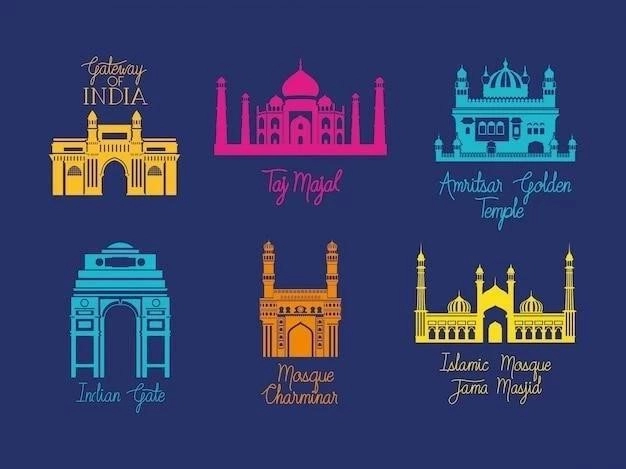
Worli Fort: A Lens on Evolving Urban Landscapes
Worli Forts significance extends beyond its historical and architectural dimensions. It serves as a compelling case study in understanding the dynamics of evolving urban landscapes and the challenges of integrating heritage conservation within a rapidly developing megacity like Mumbai.
Navigating the Tensions of Urban Development
The juxtaposition of the historic fort against the backdrop of towering skyscrapers and the modern marvel of the Bandra-Worli Sea Link encapsulates the ongoing dialogue between preservation and progress in Mumbai. Worli Fort stands as a silent sentinel, bearing witness to the citys relentless transformation, often at the cost of its historical fabric. This visual contrast compels us to confront the complexities of urban development and the delicate balance required to safeguard heritage amidst the pressures of modernization.
Reimagining Public Spaces and Community Engagement
Worli Fort, despite its historical significance, remained largely neglected for decades, overshadowed by the citys rapid growth. However, recent restoration efforts, coupled with a growing awareness of heritage conservation, have breathed new life into the fort and its surrounding environs. The fort now serves as a vital public space, attracting visitors and locals alike, fostering a sense of community ownership and pride. This transformation underscores the importance of reimagining historical sites not as isolated relics, but as integral components of the urban fabric, capable of fostering social cohesion and civic engagement.
Worli Fort: A Catalyst for Sustainable Urbanism
The case of Worli Fort offers valuable lessons for sustainable urban planning in rapidly developing cities worldwide. It highlights the need for a holistic approach to development, one that recognizes the intrinsic value of preserving cultural heritage as a means of anchoring urban identity and fostering a sense of place. By integrating historical sites like Worli Fort into the urban fabric, creating accessible public spaces, and promoting community engagement, cities can strive towards a more balanced and sustainable model of development—one that respects the past while embracing the future.
Preserving the Narrative for Future Generations
Worli Forts story is still being written. Its future hinges on our collective commitment to preserving not just its physical structure, but also the invaluable historical and cultural narratives it embodies. Through ongoing research, conservation efforts, and community engagement, we can ensure that Worli Fort continues to inspire, educate, and serve as a poignant reminder of the rich tapestry of human history interwoven within the fabric of Mumbai.
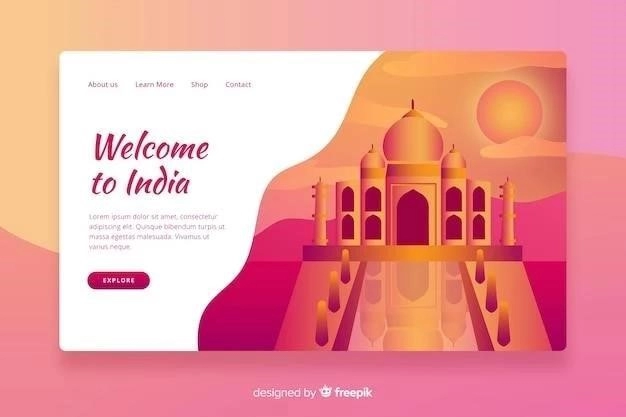
Worli Fort: A Beacon for Heritage Tourism and Cultural Revitalization
Worli Fort, with its strategic location and historical significance, holds immense potential as a focal point for heritage tourism in Mumbai. By adopting a comprehensive and culturally sensitive approach, the fort can be transformed into a captivating destination that attracts visitors while fostering a deeper understanding and appreciation for the city’s rich past.
Curating Engaging Visitor Experiences
To enhance the visitor experience, strategic investments in interpretive signage, guided tours, and interactive exhibits are essential. These initiatives can effectively convey the forts history, architectural nuances, and its role in shaping Mumbais maritime heritage. Furthermore, incorporating multimedia elements, such as augmented reality applications, can offer immersive and engaging ways for visitors to connect with the fort’s past.
Integrating Worli Fort into a Heritage Tourism Circuit
Creating a cohesive heritage tourism circuit that connects Worli Fort with other significant landmarks in Mumbai, such as the Gateway of India, Chhatrapati Shivaji Maharaj Vastu Sangrahalaya (Museum), and Mani Bhavan Gandhi Museum, can offer a more enriching and comprehensive experience for visitors. This interconnected network can showcase the multifaceted layers of Mumbais history, from its colonial past to its role in Indias independence movement.
Empowering Local Communities Through Heritage Tourism
The development of Worli Fort as a heritage tourism destination presents a unique opportunity to empower local communities economically and socially. Engaging residents in tourism-related activities, such as guiding tours, crafting souvenirs, or running local eateries, can create sustainable livelihoods and instill a sense of ownership over their cultural heritage. Moreover, partnering with local NGOs and community organizations can ensure that tourism development benefits the community while preserving the authenticity and integrity of the site;
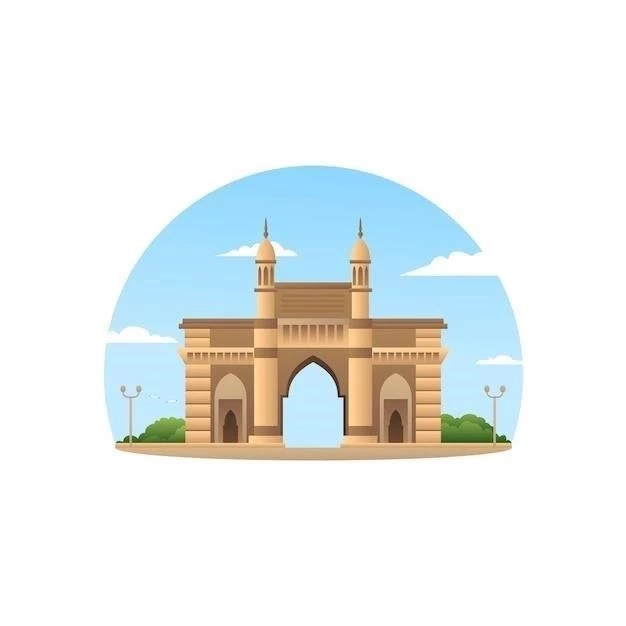
Worli Fort: A Testament to Mumbais Enduring Spirit
In the tapestry of Mumbais vibrant and ever-evolving narrative, Worli Fort stands as a poignant reminder of the citys resilient spirit. Its enduring presence serves as a tangible link to a bygone era, offering valuable insights into the forces that have shaped Mumbai into the dynamic metropolis it is today. By embracing a holistic approach that prioritizes conservation, community engagement, and sustainable tourism, Worli Fort can continue to inspire awe, ignite curiosity, and foster a deeper appreciation for the layers of history that weave through the heart of Mumbai.
Beyond Tourism: Worli Fort as a Case Study for Urban Heritage Management
Worli Forts narrative extends far beyond its appeal as a tourist destination. Its very existence, nestled within the burgeoning metropolis of Mumbai, presents a unique opportunity to examine and address the complexities of managing urban heritage in a rapidly developing world.
A Microcosm of Challenges and Opportunities
The forts immediate surroundings reflect the broader challenges faced by heritage sites globally. Encroachment, inadequate infrastructure, and a lack of awareness regarding historical significance are all issues that demand innovative solutions. Worli Fort can serve as a valuable microcosm for piloting initiatives and studying their effectiveness. Successes here can offer transferable models for other urban heritage sites grappling with similar pressures.
Fostering Interdisciplinary Collaboration
Addressing the multifaceted challenges facing Worli Fort necessitates a collaborative approach. Urban planners, architects, historians, archaeologists, sociologists, and local communities must work in concert. This interdisciplinary dialogue can lead to more holistic conservation strategies that respect both the tangible and intangible heritage embodied within the fort and its surrounding context.
Engaging with Technology for Preservation and Interpretation
Technological advancements offer exciting possibilities for heritage management. 3D laser scanning can create detailed records of the forts architecture٫ aiding in both conservation and virtual reconstruction efforts. Augmented reality applications can enhance visitor experiences by overlaying historical information and imagery onto the physical space. Utilizing these tools can contribute to a more engaging and accessible understanding of Worli Forts significance.
Championing Community Stewardship
The long-term sustainability of any heritage conservation effort rests on active community participation. Engaging local residents in the preservation process through educational programs, skills training, and participatory planning initiatives fosters a sense of ownership and pride; Empowering communities to become stakeholders in the management of their heritage ensures that Worli Fort remains a vibrant and valued part of Mumbais cultural landscape for generations to come.
Worli Fort stands as a powerful symbol of resilience and adaptation. Its story is far from over. By embracing innovative approaches to heritage management, fostering collaboration across disciplines, and prioritizing community engagement, Worli Fort can serve as a beacon of best practice, illuminating the path towards a future where urban development and heritage conservation thrive in harmony.
Worli Fort: A Catalyst for Urban Regeneration and Social Inclusion
Beyond its historical and cultural significance, Worli Fort possesses untapped potential as a catalyst for urban regeneration and social inclusion. Its strategic location within Mumbai, a city grappling with rapid urbanization and its attendant challenges, presents a unique opportunity to explore innovative approaches to integrate heritage conservation with broader urban development goals.
Reconnecting the Fort with the Urban Fabric
Decades of urban expansion have resulted in Worli Fort becoming increasingly isolated from its surrounding neighborhoods. Re-establishing physical and visual connections between the fort and the city is crucial to fostering a sense of shared ownership and pride. This can be achieved through:
- Improved Accessibility: Developing pedestrian-friendly pathways, enhancing public transportation links, and creating clearly marked access points from surrounding neighborhoods will encourage greater visitation and integration into the daily lives of residents.
- Green Corridor Development: Establishing a green corridor connecting Worli Fort to other green spaces within the city would not only enhance biodiversity and improve air quality but also create a recreational amenity for residents and visitors alike.
- Revitalizing the Waterfront: The fort’s proximity to the Arabian Sea presents an opportunity to create a vibrant waterfront promenade. This would not only enhance the aesthetic appeal of the area but also provide opportunities for economic development through small-scale commercial activities.
Fostering Social Inclusion Through Heritage-Based Initiatives
Worli Fort has the potential to become a hub for social inclusion by providing a platform for:
- Skills Development and Entrepreneurship: Establishing vocational training centers within or near the fort, focusing on heritage-related crafts, conservation techniques, and tourism-related services, can empower marginalized communities with skills to participate in the local economy.
- Cultural Exchange and Dialogue: The fort can serve as a venue for cultural events, performances, and exhibitions that showcase the diverse heritage of Mumbai, promoting intercultural understanding and social cohesion.
- Community Engagement in Planning and Management: Creating a participatory planning process that actively involves residents, local businesses, and community organizations in shaping the future of the fort and its surroundings will ensure that development benefits all stakeholders.
A Model for Sustainable Urban Heritage Management
By embracing these principles of urban regeneration and social inclusion, Worli Fort can transcend its status as a mere historical relic and become a dynamic and integral part of Mumbais urban fabric. Its transformation can serve as a model for other cities around the world striving to find innovative ways to manage their heritage in a manner that is both sustainable and socially equitable.
The future of Worli Fort lies not in isolating it from the dynamism of Mumbai but in strategically leveraging its historical significance to address contemporary urban challenges. By embracing a holistic approach that integrates heritage conservation with urban regeneration, social inclusion, and economic empowerment, Worli Fort can become a beacon of hope and a testament to the power of heritage to shape a more vibrant and inclusive future for all.
Leveraging Tourism as a Force for Positive Change
While Worli Forts potential extends beyond tourism, strategically harnessing its appeal to responsible travelers can contribute significantly to its long-term sustainability and positive social impact. Key considerations include:
Developing Authentic and Engaging Experiences
Moving away from generic sightseeing tours, the focus should be on crafting immersive experiences that provide visitors with a deeper understanding of the forts multi-layered history, architectural significance, and its relationship with the surrounding community. This can be achieved through:
- Curated Walking Tours: Led by knowledgeable local guides, these tours can delve into specific themes like the forts colonial past, its architectural evolution, or the stories of the fishing communities who have long called this area home.
- Living History Programs: Bringing the fort to life through reenactments, demonstrations of traditional crafts, and interactive exhibits can create a more engaging and memorable visitor experience.
- Collaborations with Local Artists and Artisans: Incorporating performances, workshops, and exhibitions by local artists and artisans into the visitor experience can provide economic opportunities while showcasing the vibrant cultural tapestry of Mumbai.
Promoting Responsible Tourism Practices
It is crucial to mitigate the potential negative impacts of tourism through:
- Visitor Management Strategies: Implementing measures like timed entry, designated pathways, and interpretive signage can help manage visitor flow and minimize wear and tear on the historic structure.
- Community-Based Tourism Initiatives: Partnering with local businesses, particularly those owned and operated by residents of surrounding neighborhoods, ensures that tourism revenue directly benefits the community. This can include promoting local eateries, craft shops, and homestays.
- Interpretation and Education: Utilizing interpretive signage, brochures, and digital platforms to educate visitors about the importance of responsible behavior, cultural sensitivity, and the forts significance, fosters a sense of respect and appreciation.
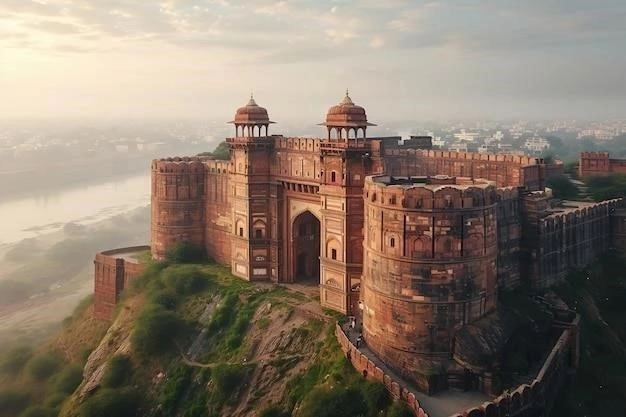
Worli Fort: A Shared Vision for the Future
The revitalization of Worli Fort presents a compelling opportunity to demonstrate how heritage conservation can serve as a catalyst for positive social, economic, and environmental change. By embracing a holistic approach that prioritizes community engagement, responsible tourism development, and innovative conservation strategies, Worli Fort can reclaim its rightful place as a vibrant cultural hub and an enduring symbol of Mumbais rich and complex history. This collaborative endeavor has the potential to serve as a model for other urban heritage sites around the world, demonstrating that the preservation of our shared history is not merely about safeguarding the past but about building a more sustainable and inclusive future for all.










